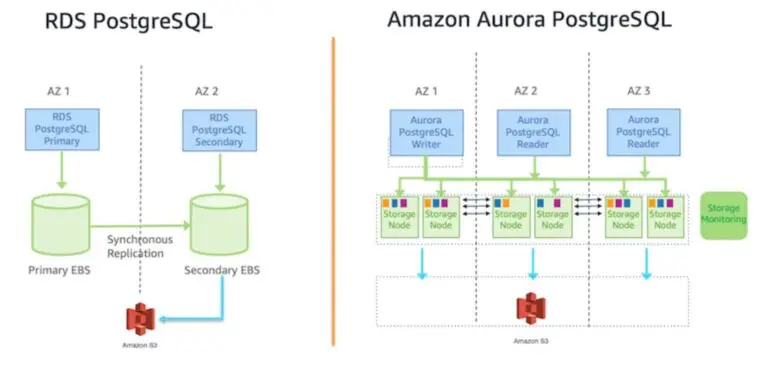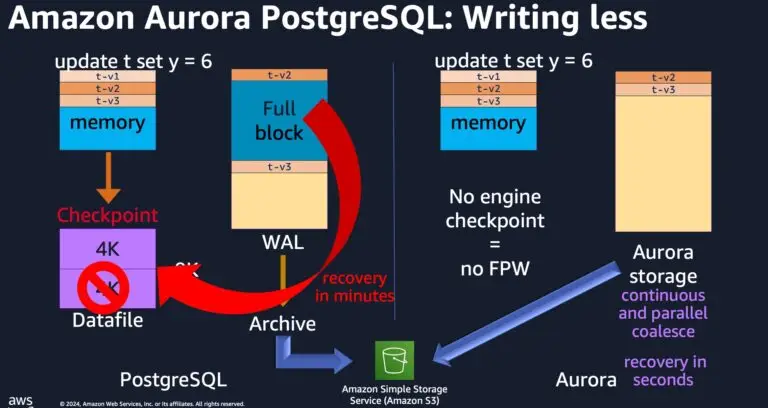From architecture and Serverless v2 to Blue/Green deployments, Zero-ETL, I/O-Optimized storage, and Limitless Database — here’s what stood out and how it applies to real workloads.
Aurora is a cloud-native database that separates compute from storage and replicates data six ways across three Availability Zones. Unlike vanilla PostgreSQL, Aurora avoids full-page writes during checkpoints, significantly reducing I/O and enabling much faster recovery by reconstructing from Amazon S3 in parallel.

Why it matters: You get high durability and fast crash recovery without the operational burden of complex storage tuning.

Tip: For non-prod clusters, set min capacity to 0 ACUs and a short pause timeout to save costs.